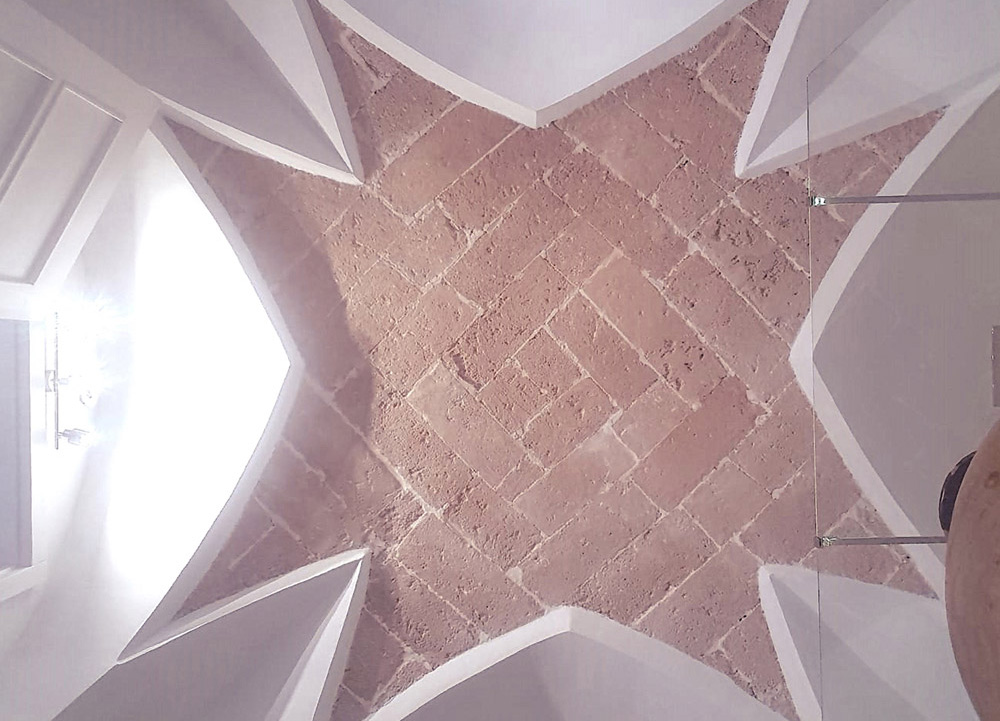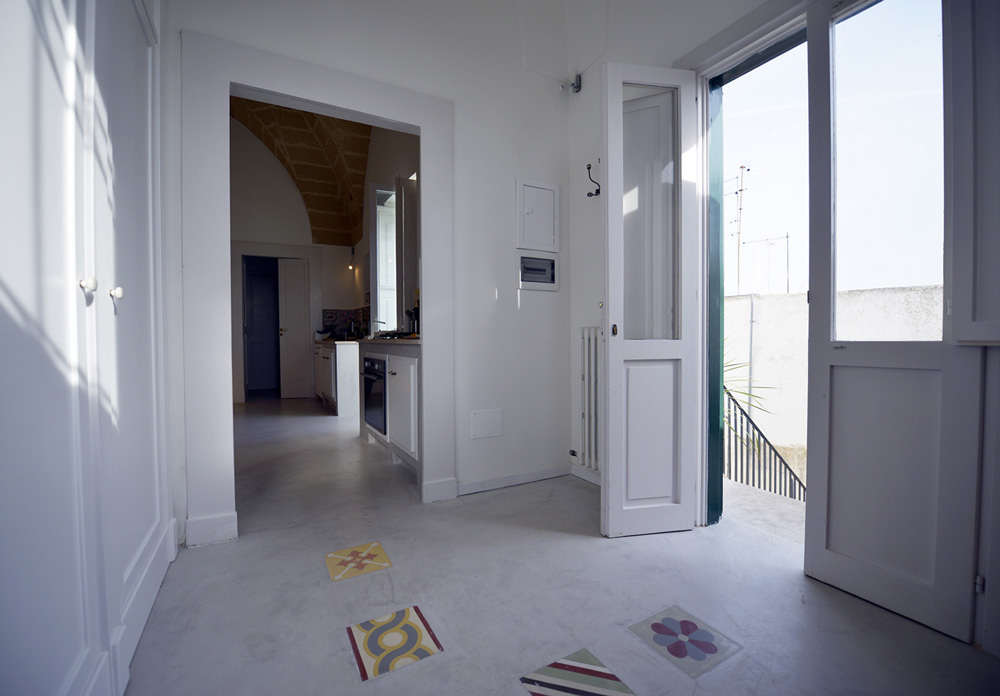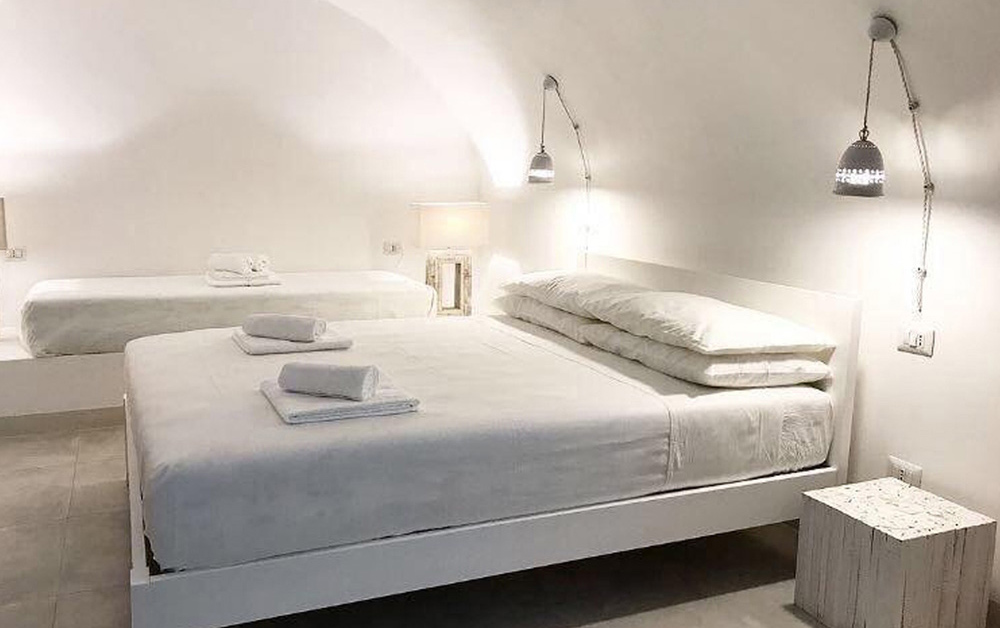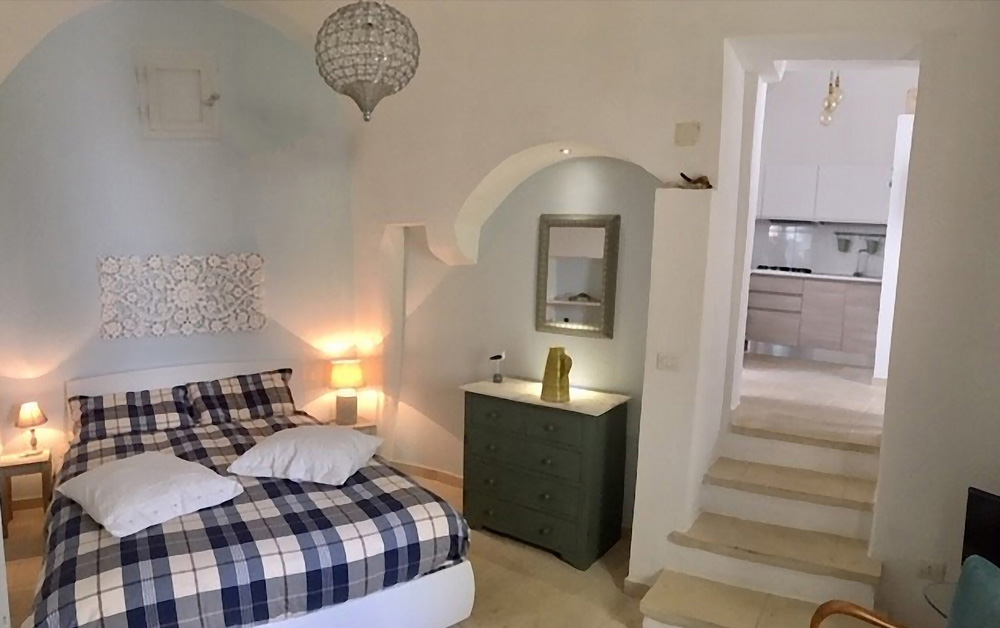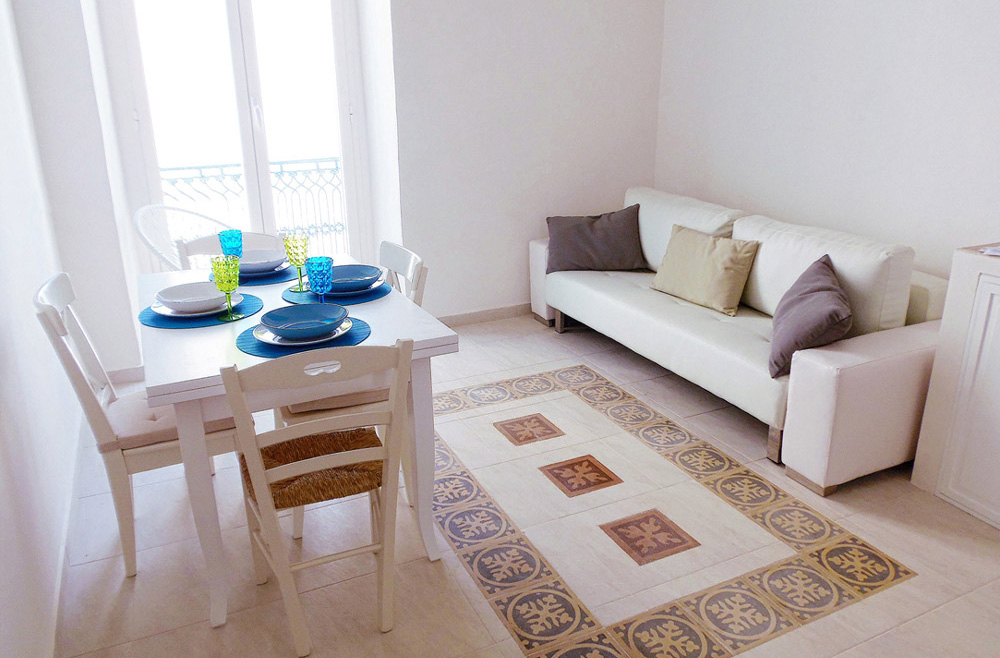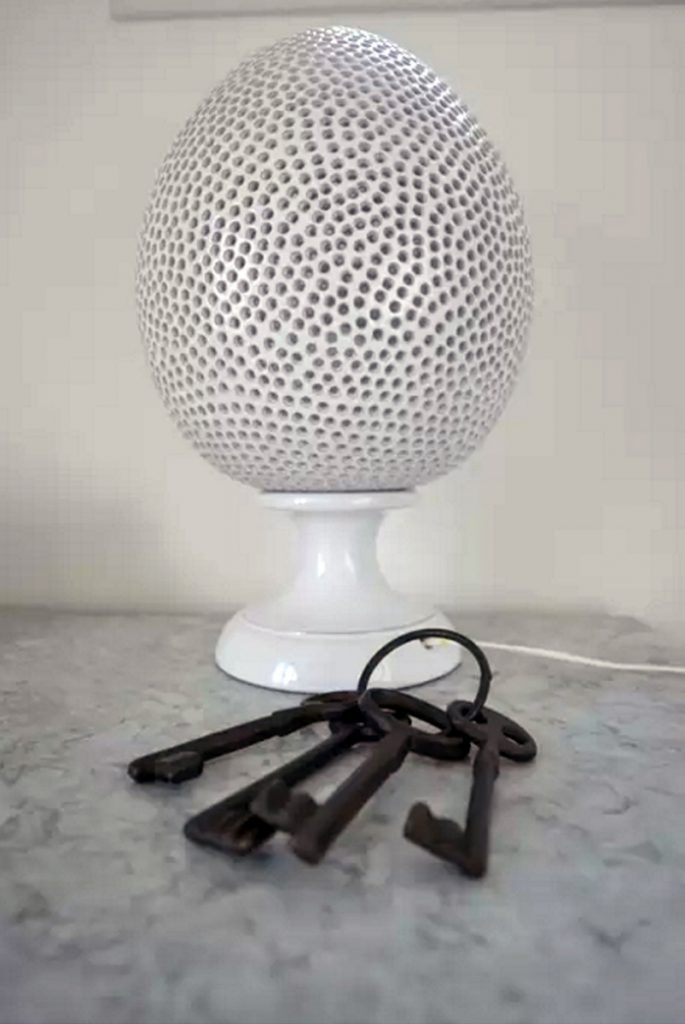
The Neo-Mediterranean Style can be defined as a guide to follow in order to link one’s home to the surrounding landscape and thus create a synchrony between the place around us.
The sun, the sea and the wind are the conceptual genesis of a style, elements that constitute a place and a landscape that, in the definition of a living space are synthesized in light, color and perception in their expression of essence. The right balance between these conceptual archetypes has evolved over time into a way of conceiving built space and lifestyle and justifies them as expressions of man. Places of the sea between the lands, life between life but also a bridge of connection among cultures which integrating with the rest, reach a higher level of awareness, in particular in the large ports that become a container of expressions.
The quality of the landscape inspires a natural search for that life in which time is transformed into the translator of emotions through conscious and unconscious experiences, direct and indirect, induced and experienced. The domestic space, today more than ever, is the refuge of one’s own time in which we are allowed to slow down by seeking to return to harmony with the whole, the space in which let go one’s natural tendency to enjoy life.
The contemporary lifestyle of cities brings the individual to a continuous daily acceleration in which the quality of life precipitates, and the wealth of time is lost. The places of the landscape remain partially affected by this phenomenon only because they remain the detached custodians of the time. They are at odds with the places of living, at this point standardized by the speculative logic of building without architecture and by the principle of “everything at once”.
The need to recover the synchrony between place and residence arises spontaneously. The contemporary space must be aligned and integrated into the historical landscape, the extension of nature, in a conscious way.
This is possible by recovering the style of living in the middle sea and reinterpreting spaces and perceptions in a contemporary key, where residence becomes the filter of the soul and the space of connection with the place.
In this sense, are identified the elements that represent a conceptual guide to interpret what we can define “Neo-Mediterranean Style“, to be read as a list of ideas and references that can define a base from which develop architecture.
RESIDENTIAL PLACES
- The large and bright rooms of a house.
- Internal heights above the average to manage the summer heat naturally, also thanks to the traditional vaults.
- The arrangement remains tradition, passing from the living area to the sleeping quarter which are well separated. The presence of an entrance gives importance to the living area.
- The equipped terrace becomes an added value and an extension of the house that opens to the outside.
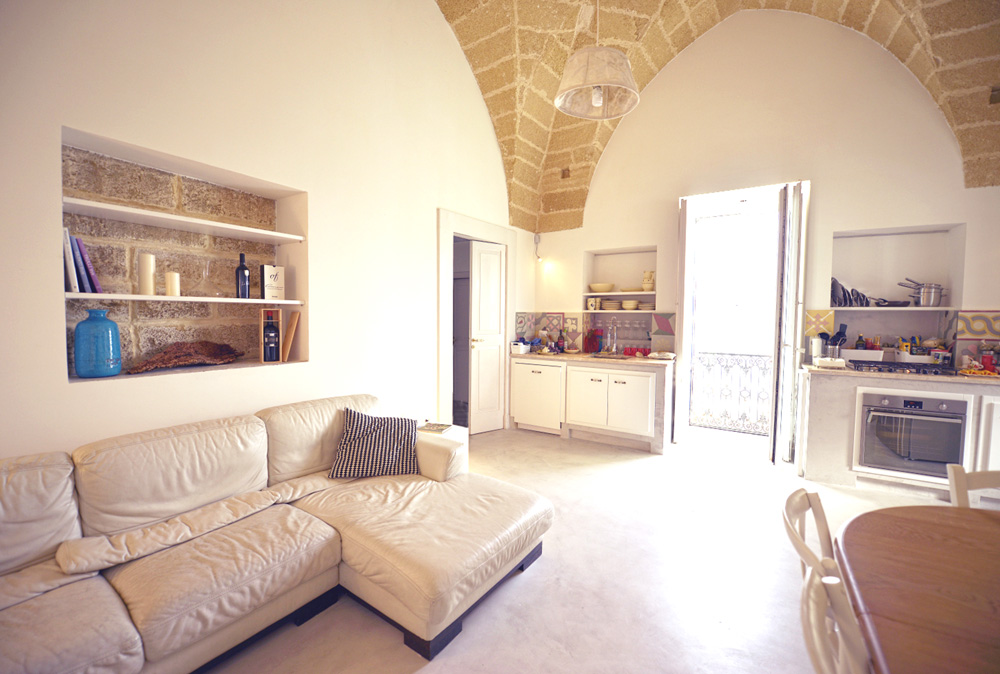
Large and bright rooms with heights defined by traditional vaults.
FINISHING
- The use of natural materials intervenes on indirect perception and makes the environment warmer and more familiar.
- The dominant white color takes up the ancient way of sanitizing the lime surfaces and enhances the contrasts, widening the sense of spatial dimension.
- Floors in the form of a resinous monolith or stoneware in a single format, chosen for size based on the proportions of the space, connect the rooms, extending the perception of continuity, expanding the reading of the space itself.
- The use of cement (cementine) pasta or grits must be reasoned and not extensive in order not to burden the environments, both for floors and for coverings. The solution of selective insertions in a different flooring can be used.
- The terraces can be equipped with pergolas and gazebos that can be covered with light fabrics or with cane stole, stone sofas, outdoor kitchens and relaxation areas.
The balanced use of natural materials and tradition create a fresh and refined environment.
VIEWS AND NATURAL LIGHT
- Visuals and views both from inside and outside, both panoramic and foreshortenings, are an element that takes on centrality in the project.
- Natural light as the dominant and pervasive element of the house makes it very bright during the day and suggestive at night.
- Tall windows and French windows are the ideal tool to satisfy both the light and the visual element.
The study of views and places enhances projects such as this glimpse of the sea of Gallipoli (LE) from a terrace in the historic center.
COLOR
- The dominant white is the basis for all chromatic reinterpretations depending on whether the direction of the project is the one of a minimal-shabby or a metro-baroque reinterpreted in a Mediterranean key.
- The basic colors for the walls to be combined possibly with white are the colors of the natural elements that recall the sea, in the lightest shades such as sand, sky blue, sea water green, pearl, beige.

The colors to match must always recall the sea
The contrast is a studied and characterizing choice, starting from the basic white lime
TECHNOLOGY
- Technology must be the backbone of the home in all its forms.
- It must be integrated and invisible, but must be based on the principles of energy saving and comfort.
- Technology must also be in the construction and in its element.
The choice of furniture becomes a complex process in the search of balance
FURNITURE
- It is needed to find the right balance between vintage furniture, revised in color and brought back to living wood, and contemporary ones, which must be simple and in natural materials, so that the sense of refuge is always linked to the present time.
- Fireplaces, previously always present in the rooms, now become a furnishing element that characterize the environment.
The recovery of furniture and antique elements makes the environments interesting, characterizing them
ACCESSORIES
- The use of ceramic elements for lighting and furnishing complements creates a pleasant sense of memory and the glossy finish livens up the contrast with the background.
- The inclusion of elements that recall the past as parts of illuminations or pumas and pine cones in contrast with contemporary art objects, give prestige and pleasantness to the environment.
- Plants and pots stimulate communication between inside and outside.
- It is important to work on the contrasts between the accessories and the background.
The great artisan tradition has found renewal in the new generations by creating objects in traditional materials of extraordinary contemporaneity
Through history, the design research has generated a recognizable contemporary style and not a simple trend, in which the places of life and emotion are shelters where time becomes important for every single moment spent on the shores of the Mediterranean.
